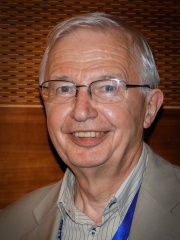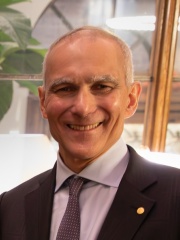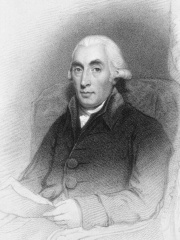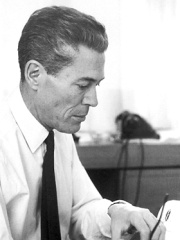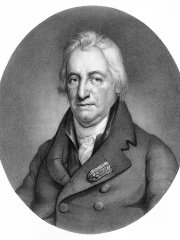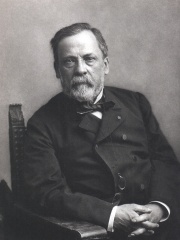
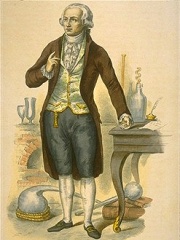
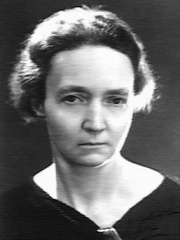
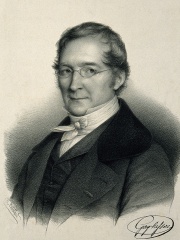
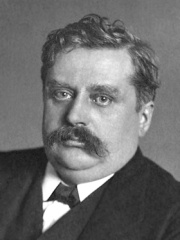
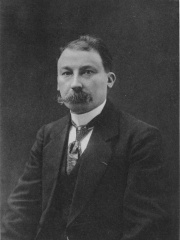
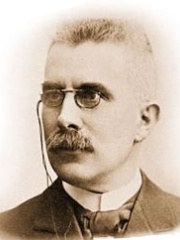
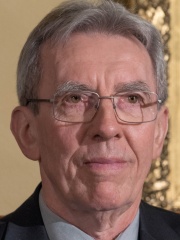
The Most Famous
CHEMISTS from France
This page contains a list of the greatest French Chemists. The pantheon dataset contains 602 Chemists, 64 of which were born in France. This makes France the birth place of the 4th most number of Chemists behind Germany, and United Kingdom.
Top 10
The following people are considered by Pantheon to be the top 10 most legendary French Chemists of all time. This list of famous French Chemists is sorted by HPI (Historical Popularity Index), a metric that aggregates information on a biography's online popularity. Visit the rankings page to view the entire list of French Chemists.

1. Louis Pasteur (1822 - 1895)
With an HPI of 89.24, Louis Pasteur is the most famous French Chemist. His biography has been translated into 164 different languages on wikipedia.
Louis Pasteur (, French: [lwi pastœʁ] ; 27 December 1822 – 28 September 1895) was a French chemist, pharmacist, and microbiologist renowned for his discoveries of the principles of vaccination, microbial fermentation, and pasteurization, the last of which was named after him. His research in chemistry led to remarkable breakthroughs in the understanding of the causes and preventions of diseases, which laid down the foundations of hygiene, public health and much of modern medicine. Pasteur's works are credited with saving millions of lives through the developments of vaccines for rabies and anthrax. He is regarded as one of the founders of modern bacteriology and has been honored as the "father of bacteriology" and the "father of microbiology" (together with Robert Koch; the latter epithet also attributed to Antonie van Leeuwenhoek). Pasteur was responsible for disproving the doctrine of spontaneous generation. Under the auspices of the French Academy of Sciences, his experiment demonstrated that in sterilized and sealed flasks, nothing ever developed; conversely, in sterilized but open flasks, microorganisms could grow. For this experiment, the academy awarded him the Alhumbert Prize carrying 2,500 francs in 1862. Pasteur is also regarded as one of the fathers of the germ theory of diseases, which was a minor medical concept at the time. His many experiments showed that diseases could be prevented by killing or stopping germs, thereby directly supporting the germ theory and its application in clinical medicine. He is best known to the general public for his invention of the technique of treating milk and wine to stop bacterial contamination, a process now called pasteurization. Pasteur also made significant discoveries in chemistry, most notably on the molecular basis for the asymmetry of certain crystals and racemization. Early in his career, his investigation of sodium ammonium tartrate initiated the field of optical isomerism. This work had a profound effect on structural chemistry, with eventual implications for many areas including medicinal chemistry. He was the director of the Pasteur Institute, established in 1887, until his death, and his body was interred in a vault beneath the institute. Although Pasteur made groundbreaking experiments, his reputation became associated with various controversies. Historical reassessment of his notebook revealed that he practiced deception to overcome his rivals.

2. Antoine Lavoisier (1743 - 1794)
With an HPI of 86.04, Antoine Lavoisier is the 2nd most famous French Chemist. His biography has been translated into 108 different languages.
Antoine-Laurent de Lavoisier ( lə-VWAH-zee-ay; French: [ɑ̃twan lɔʁɑ̃ də lavwazje]; 26 August 1743 – 8 May 1794), also Antoine Lavoisier after the French Revolution, was a French nobleman and chemist who was central to the 18th-century chemical revolution and who had a large influence on both the history of chemistry and the history of biology. It is generally accepted that Lavoisier's great accomplishments in chemistry stem largely from his changing the science from a qualitative to a quantitative one. Lavoisier is noted for his discovery of the role oxygen plays in combustion, opposing the prior phlogiston theory of combustion. He named oxygen (1778), recognizing it as an element, and also recognized hydrogen as an element (1783). By using more precise measurements than previous experimenters, he confirmed the developing theory that, although matter in a closed system may change its form or shape, its mass always remains the same (now known as the law of conservation of mass), which led to the development of the balanced physical and chemical reaction equations that we still use today. Lavoisier helped construct the metric system, wrote the first extensive list of elements, in which he predicted the existence of silicon, and helped to reform chemical nomenclature. (1787) His wife and laboratory assistant, Marie-Anne Paulze Lavoisier, became a renowned chemist in her own right, and worked with him to develop the metric system of measurements. Lavoisier was a powerful member of a number of aristocratic councils, and an administrator of the Ferme générale. The Ferme générale was one of the most hated components of the Ancien Régime because of the profits it took at the expense of the state, the secrecy of the terms of its contracts, and the violence of its armed agents. All of these political and economic activities enabled him to fund his scientific research. At the height of the French Revolution, he was charged with tax fraud and selling adulterated tobacco, and was guillotined despite appeals to spare his life in recognition of his contributions to science. A year and a half later, he was exonerated by the French government.

3. Irène Joliot-Curie (1897 - 1956)
With an HPI of 82.18, Irène Joliot-Curie is the 3rd most famous French Chemist. Her biography has been translated into 99 different languages.
Irène Joliot-Curie (French: [iʁɛn ʒɔljo kyʁi] ; née Curie; 12 September 1897 – 17 March 1956) was a French chemist and physicist who received the 1935 Nobel Prize in Chemistry with her husband, Frédéric Joliot-Curie, for their discovery of induced radioactivity. They were the second married couple, after her parents, to win the Nobel Prize, adding to the Curie family legacy of five Nobel Prizes. This made the Curies the family with the most Nobel laureates to date. Her mother Marie Skłodowska-Curie and she also form the only mother–daughter pair to have won Nobel Prizes whilst Pierre and Irène Curie form the only father-daughter pair to have won Nobel Prizes by the same occasion, whilst six father-son pairs have won Nobel Prizes by comparison. She was also one of the first three women to be a member of a French government, becoming undersecretary for Scientific Research under the Popular Front in 1936. Both children of the Joliot-Curies, Hélène and Pierre, are also scientists. In 1945, she was one of the six commissioners of the new French Alternative Energies and Atomic Energy Commission (CEA) created by de Gaulle and the Provisional Government of the French Republic. She died in Paris on 17 March 1956 from an acute leukemia linked to her exposure to polonium and X-rays.

4. Joseph Louis Gay-Lussac (1778 - 1850)
With an HPI of 81.21, Joseph Louis Gay-Lussac is the 4th most famous French Chemist. His biography has been translated into 78 different languages.
Joseph Louis Gay-Lussac (UK: gay-LOO-sak, US: GAY-lə-SAK; French: [ʒozɛf lwi ɡɛlysak]; 6 December 1778 – 9 May 1850) was a French chemist and physicist. He is known mostly for his discovery that water is made of two parts hydrogen and one part oxygen by volume (with Alexander von Humboldt), for two laws related to gases, and for his work on alcohol–water mixtures, which led to the degrees Gay-Lussac used to measure alcoholic beverages in many countries.
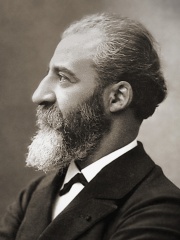
5. Henri Moissan (1852 - 1907)
With an HPI of 77.69, Henri Moissan is the 5th most famous French Chemist. His biography has been translated into 75 different languages.
Ferdinand Frédéric Henri Moissan (French pronunciation: [fɛʁdinɑ̃ fʁedeʁik ɑ̃ʁi mwasɑ̃]; 28 September 1852 – 20 February 1907) was a French chemist and pharmacist who won the 1906 Nobel Prize in Chemistry for his work in isolating fluorine from its compounds. Among his other contributions, Moissan discovered moissanite and contributed to the development of the electric arc furnace. Moissan was one of the original members of the International Atomic Weights Committee.

6. Alfred Werner (1866 - 1919)
With an HPI of 76.62, Alfred Werner is the 6th most famous French Chemist. His biography has been translated into 70 different languages.
Alfred Werner (12 December 1866 – 15 November 1919) was a Swiss chemist who was a student at ETH Zurich and a professor at the University of Zurich. He won the Nobel Prize in Chemistry in 1913 for proposing the octahedral configuration of transition metal complexes. Werner developed the basis for modern coordination chemistry. He was the first inorganic chemist to win the Nobel Prize, and the only one prior to 1973.

7. Victor Grignard (1871 - 1935)
With an HPI of 76.41, Victor Grignard is the 7th most famous French Chemist. His biography has been translated into 74 different languages.
Francois Auguste Victor Grignard (6 May 1871 – 13 December 1935) was a French chemist who won the Nobel Prize for his discovery of the eponymously named Grignard reagent and Grignard reaction, both of which are important in the formation of carbon–carbon bonds. He also wrote some of his experiments in his laboratory notebooks.

8. Henry Louis Le Chatelier (1850 - 1936)
With an HPI of 76.20, Henry Louis Le Chatelier is the 8th most famous French Chemist. His biography has been translated into 49 different languages.
Henry Louis Le Chatelier (French pronunciation: [ɑ̃ʁi lwi lə ʃɑtəlje]; 8 October 1850 – 17 September 1936) was a French chemist of the late 19th and early 20th centuries. He devised Le Chatelier's principle, used by chemists to predict the effect a changing condition has on a system in chemical equilibrium.

9. Jean-Pierre Sauvage (b. 1944)
With an HPI of 74.92, Jean-Pierre Sauvage is the 9th most famous French Chemist. His biography has been translated into 56 different languages.
Jean-Pierre Sauvage (French pronunciation: [ʒɑ̃pjɛʁ sovaʒ]; born 21 October 1944) is a French coordination chemist working at Strasbourg University. He graduated from the National School of Chemistry of Strasbourg (now known as ECPM Strasbourg), in 1967. He has specialized in supramolecular chemistry for which he has been awarded the 2016 Nobel Prize in Chemistry along with Sir J. Fraser Stoddart and Bernard L. Feringa.
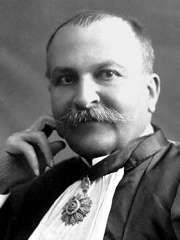
10. Paul Sabatier (1854 - 1941)
With an HPI of 74.85, Paul Sabatier is the 10th most famous French Chemist. His biography has been translated into 66 different languages.
Paul Sabatier (French: [sabatje]; 5 November 1854 – 14 August 1941) was a French chemist, born in Carcassonne. In 1912, Sabatier was awarded the Nobel Prize in Chemistry along with Victor Grignard. Sabatier was honoured for his work improving the hydrogenation of organic species in the presence of metals.
People
Pantheon has 64 people classified as French chemists born between 1645 and 1961. Of these 64, 3 (4.69%) of them are still alive today. The most famous living French chemists include Jean-Pierre Sauvage, Jean-Marie Lehn, and Moungi Bawendi. The most famous deceased French chemists include Louis Pasteur, Antoine Lavoisier, and Irène Joliot-Curie.
Living French Chemists
Go to all RankingsJean-Pierre Sauvage
1944 - Present
HPI: 74.92
Jean-Marie Lehn
1939 - Present
HPI: 72.03
Moungi Bawendi
1961 - Present
HPI: 57.05
Deceased French Chemists
Go to all RankingsLouis Pasteur
1822 - 1895
HPI: 89.24
Antoine Lavoisier
1743 - 1794
HPI: 86.04
Irène Joliot-Curie
1897 - 1956
HPI: 82.18
Joseph Louis Gay-Lussac
1778 - 1850
HPI: 81.21
Henri Moissan
1852 - 1907
HPI: 77.69
Alfred Werner
1866 - 1919
HPI: 76.62
Victor Grignard
1871 - 1935
HPI: 76.41
Henry Louis Le Chatelier
1850 - 1936
HPI: 76.20
Paul Sabatier
1854 - 1941
HPI: 74.85
Joseph Black
1728 - 1799
HPI: 73.50
Jacques Monod
1910 - 1976
HPI: 73.24
Claude Louis Berthollet
1748 - 1822
HPI: 73.03
Overlapping Lives
Which Chemists were alive at the same time? This visualization shows the lifespans of the 25 most globally memorable Chemists since 1700.

